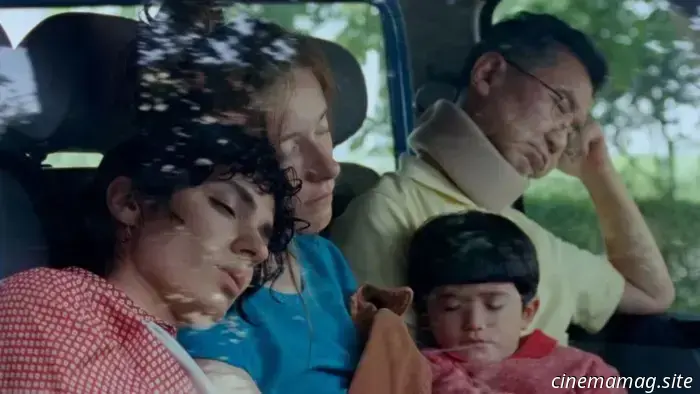
In *The Lost Bus*, the latest gripping and adrenaline-fueled disaster thriller by Paul Greengrass, a few electric sparks from a major power line ignite dry grasses, leading to an uncontrollable wildfire that devastatingly consumes Paradise, California. The town's name carries a tragic irony, as the horrific flames of the 2018 Camp Fire transformed this arid mountainous area into an unimaginable hell, resulting in 85 fatalities and incurring $13.5 billion in damages. Drawing from stories that surfaced amid the ruins, including accounts from Lizzie Johnson’s detailed narrative *Paradise: One Town’s Struggle to Survive an American Wildfire*, the film counters the destruction by focusing on an act of heroism through the lens of an underdog narrative that acts as a temporary comfort amidst the state’s otherwise grim and scorched reality. There is much to illustrate in a natural disaster of this magnitude, and Greengrass, who co-wrote the script with Brad Inglesby, swiftly navigates through burned landscapes to various emergency services and response teams. However, the protagonist at the center of this overwhelming day in November is Kevin McKay (Matthew McConaughey), a school-bus driver who has recently returned to his hometown after burying his father. At the start of *The Lost Bus*, he is still grappling with his father’s death but faces even greater worries: his dog's cancer has progressed, his son is sick and refuses to talk to him, his mother struggles to care for herself, and his ex-wife criticizes his parenting over the phone. Compounding his troubles, he is short on money, unable to persuade his supervisor for extra shifts, and late for a required bus maintenance check. When smoke begins to billow, McKay's troubled situation and tardiness make him the sole driver capable of altering his route to rescue 23 stranded schoolchildren and their teacher, Mary Ludwick (America Ferrera), transporting them to safety. It poses a potential death trap, yet also presents an opportunity for redemption. Greengrass possesses a remarkable talent for portraying disaster—the kind of dynamic, high-stakes action that continuously builds and evolves—which makes it easy to overlook how few directors manage to do it effectively. In the past, Greengrass pioneered a new wave of action films with his handheld, shaky-camera style in blockbuster hits like *The Bourne Supremacy* and *The Bourne Ultimatum*. This approach transitioned into a series of docudramas and nonfiction thrillers, including *United 93*, *Captain Phillips*, and *July 22*. Although his frenetic and jarring style (which may not appeal to everyone) has fallen out of favor in recent years, he developed a visual language that captured the intense, real-world experiences of various terror groups and those rising to confront them. In this case, the adversary is nature itself, and Greengrass finds his stride after setting up the necessary context and backstories. He has honed the formula for dynamic characters, providing them with enough background and personality that the audience feels invested when they encounter harrowing situations. There are ample moments here to keep viewers engaged—close calls and near escapes that emphasize the school bus’s cumbersome mechanics amid congested traffic and chaotic intersections. The unpredictability of the flames adds to the tension, overwhelming the windows and floors, causing the children on board to panic or fall silent in fear. Greengrass keeps the audience on edge not through manipulative drama, but by knowing when to cut, when to slow down, and when to go full throttle. This blend of technique is an art form in itself. However, much of its effectiveness hinges on the characters navigating the disaster. Greengrass is fortunate to have McConaughey, who seems naturally suited for intense situations. As a rare movie star who can don dirt and a baseball cap to fit seamlessly into a blue-collar community, McConaughey conveys the horror through the windshield with a slack-jawed demeanor, ultimately emerging as a decisive leader. He complements Ferrera, who joins the bus somewhat unaware of the impending firestorm while maintaining her composure for the sake of her students. Capturing that dynamic can be challenging, but the film shines brightest when both characters are compelled to step outside their established roles—to scout the fire, secure resources, take the wheel, or calm the frightened children. In a scenario that risks exaggerating clumsiness or anxiety to heighten the stakes, it’s refreshing to see two characters adapt to their surroundings with determined and believable efforts. Greengrass recognizes that the situation is already dire; he doesn’t need to fabricate unnecessary theatrics for emotional impact. One of Greengrass's most impactful decisions is to personify the wildfire, incorporating point-of-view shots using a windswept camera that rushes through mountains, across power lines, and over bustling roads. He frames the flames as the true antagonist of the film, lending a more
Emerging from the wartime screenings initiated by Mirsad Purivatra and Izeta Građević in the early '90s, no festival showcases its history as vividly as Sarajevo. While the city was still besieged, locals braved sniper fire to reach the basement of the Apollo theatre for VHS screenings of Basic Instinct and Field of Dreams. The event was powered by generators donated by the UN; admission was a cigarette, used to compensate the technicians; and films were smuggled in through tunnels designed for transporting food. “The war cinema Apollo was crystal clear, diamond hard in its purpose,” Mark Cousins remarked. “To defibrillate. To keep Sarajevo alive.”
The festival officially commenced in 1995, just months before the siege officially concluded, during a time when expectations from the war-weary audience were uncertain, yet crowds flocked to the event. Last month, while attending a screening of La Grande Bellezza (after a rather grumpy Paolo Sorrentino accepted his lifetime achievement award) in the main open-air theatre—surrounded by buildings still scarred with bullet holes, a common sight in the city—I inquired with a local about why the festival remained in this location instead of moving to a more aesthetically pleasing area. She explained that it would never change because the gathering in '95 marked the first moment the city felt free.
Each August for two weeks, the city transforms into a massive celebration, drawing film enthusiasts and holidaymakers from the Balkans eager to indulge in cevapcici, explore the Ottoman-era architecture in the Muslim neighborhoods, and perhaps catch a glimpse of Stellan Skarsgård. This year's top prize went to Wind, Talk to Me, an affecting family narrative from Serbian filmmaker Stefan Đorđević. Recently, our own Leonardo Goi referred to it (most eloquently) as “an act of faith: a son learning to surrender to the world and finding his mother permeating through it still."
In Ivana Mladenović’s Sorella di Clausura, the tone is far less nostalgic, presenting a surrealist farce linked to the style of Radu Jude, the director’s fellow countryman, but infused with its unique blend of learned bad taste and textural nuances. The film features Katia Pascariu, whose downtrodden performance in Jude’s Bad Luck Banging and Looney Porn significantly contributed to that film's unexpected Golden Bear victory in 2021. In Sorella, Pascariu portrays Stela, a disturbingly reclusive 36-year-old who harbors an intense crush on a well-known singer named Bodan (played with slippery charm by the director’s father).
The film tracks Stela’s desires and obsessions through scenes that meld dreams, reality, and absurdity, all while maintaining a critical stance on societal changes that, in the late-2000s context of the film, were marketed to women (in Romania and elsewhere) as progress. Sorella features raunchy jokes, humorous references to sex toys, rapid jump cuts, and a recurring visual motif that feels uniquely original. This is clever, inventive filmmaking from a director worth watching closely.
Among the more established European filmmakers present was Julian Radlmaier, who introduced his screening in what appeared to be quite proficient Bosnian—certainly good enough to please the local audience (he recently informed me that his wife has connections there). Admittedly, it took a while for me to appreciate his work, particularly after my initial discomfort with the title of Radlmaier’s breakout film, Self-Criticism of a Bourgeois Dog. His 2021 film Bloodsuckers calmed my nerves; however, his latest, Phantoms of July, stands out as a subtle success.
Set in the East German town of Sangerhausen––with the original title, Sehnsucht (or Longing) in Sangerhausen, being a rare win for the German language––the film showcases a range of quirky characters and interwoven narratives within a span of two days. There is a local waitress who becomes enamored with a visiting musician, an Iranian influencer creating travel videos for TikTok, and possibly some ghosts haunting the mountains. Bright, edgy, and genuinely humorous, Phantoms is a rarity: a comedy with a communal spirit that remains honest and empathetic regarding the underlying tensions in East Germany (and similar locations) without disparaging its subjects. It is a wonderful film that embodies the courage of its beliefs while providing abundant cinematic marvel.
While White Snail may not offer the same lighthearted enjoyment, it nonetheless surprised me—particularly through its central romance between a slender model and a morgue worker with a penchant for painting during his spare time. The film previously screened in Locarno a couple of weeks prior, premiering almost exactly a year after Saule Bliuvaite’s similarly awkward Toxic, which addressed the threats faced by young models in that region and won


Other articles
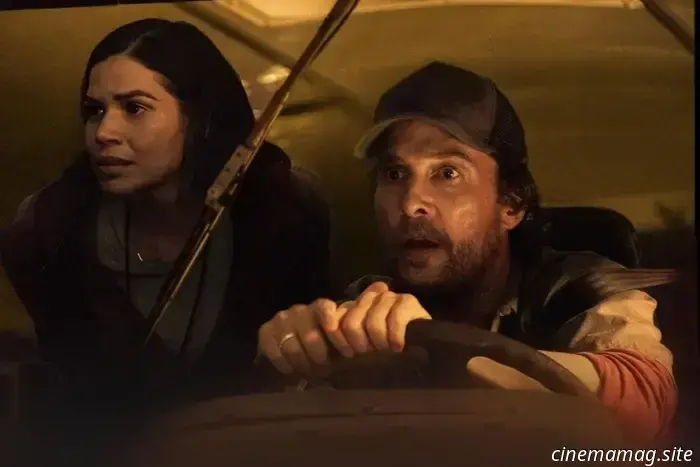 TIFF Review: Paul Greengrass’ The Lost Bus is a Masterclass in Disaster Movies
In The Lost Bus, the latest gripping and adrenaline-pumping disaster thriller by Paul Greengrass, a few stray sparks from a high-voltage power line ignite dry vegetation, leading to an uncontrollable wildfire that ruthlessly consumes Paradise, California. The town’s name carries a tragic irony—the ferocious flames of the 2018 Camp Fire devastated the arid, mountainous area.
TIFF Review: Paul Greengrass’ The Lost Bus is a Masterclass in Disaster Movies
In The Lost Bus, the latest gripping and adrenaline-pumping disaster thriller by Paul Greengrass, a few stray sparks from a high-voltage power line ignite dry vegetation, leading to an uncontrollable wildfire that ruthlessly consumes Paradise, California. The town’s name carries a tragic irony—the ferocious flames of the 2018 Camp Fire devastated the arid, mountainous area.
 Stephen Colbert Begins CBS's Emmys by inquiring, 'Is Anyone Recruiting?'
Stephen Colbert received a standing ovation at the Emmys as he presented the first award of the evening, jokingly asking the audience, "Is anyone hiring?"
Stephen Colbert Begins CBS's Emmys by inquiring, 'Is Anyone Recruiting?'
Stephen Colbert received a standing ovation at the Emmys as he presented the first award of the evening, jokingly asking the audience, "Is anyone hiring?"
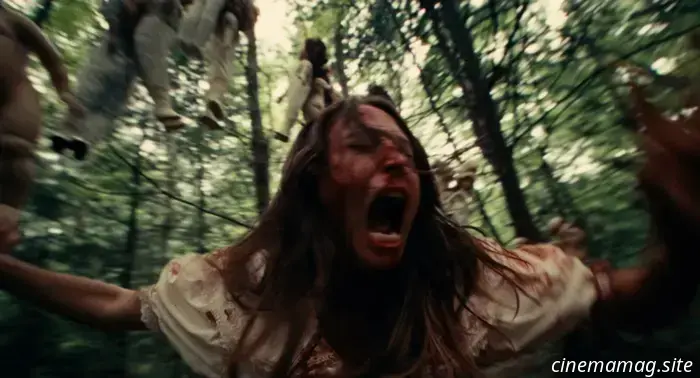 Folk horror film Dolly releases trailer in anticipation of its world premiere at Fantastic Fest.
Before its world premiere at Fantastic Fest later this month, a trailer has been released online for Rod Blackhurst's folk horror film, Dolly. The story centers on a young woman's battle for survival after being kidnapped by a crazed creature. The cast includes Fabianne Therese, Seann William Scott, Ethan Suplee, and Max the Impaler. Check […]
Folk horror film Dolly releases trailer in anticipation of its world premiere at Fantastic Fest.
Before its world premiere at Fantastic Fest later this month, a trailer has been released online for Rod Blackhurst's folk horror film, Dolly. The story centers on a young woman's battle for survival after being kidnapped by a crazed creature. The cast includes Fabianne Therese, Seann William Scott, Ethan Suplee, and Max the Impaler. Check […]
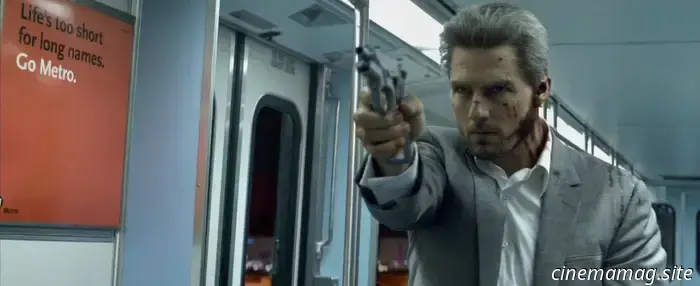 Exclusive: Japan Society Unveils October Series Featuring Shiguéhiko Hasumi: A Different Perspective on Cinema in America and Japan.
In a recent addition to the race for series of the year, New York's Japan Society has granted complete freedom in programming to Shiguéhiko Hasumi––a critic, theorist, and scholar who has also mentored Kiyoshi Kurosawa. The outcome is Shiguéhiko Hasumi: Another History of the Movie in America and Japan, scheduled to take place from October 9 to 18 and
Exclusive: Japan Society Unveils October Series Featuring Shiguéhiko Hasumi: A Different Perspective on Cinema in America and Japan.
In a recent addition to the race for series of the year, New York's Japan Society has granted complete freedom in programming to Shiguéhiko Hasumi––a critic, theorist, and scholar who has also mentored Kiyoshi Kurosawa. The outcome is Shiguéhiko Hasumi: Another History of the Movie in America and Japan, scheduled to take place from October 9 to 18 and
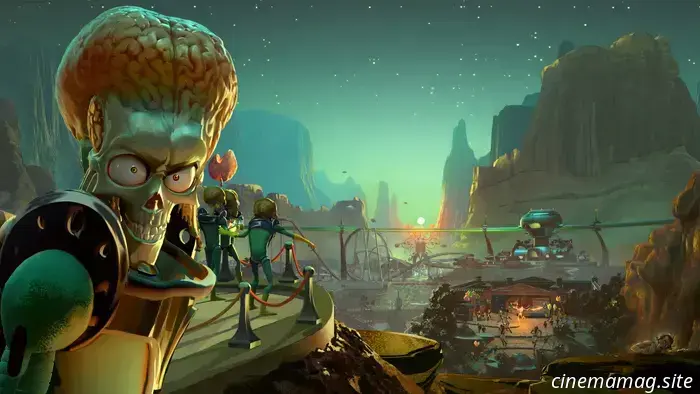 Mars Attracts launches on Steam Early Access.
Today, Outlier Games has unveiled their much-anticipated park management simulation, Mars Attracts, which is now available on Steam Early Access. Create the ultimate theme park for Martians while sacrificing humanity in this delightfully wicked tycoon game. Check out the new trailer below to glimpse what players can expect […]
Mars Attracts launches on Steam Early Access.
Today, Outlier Games has unveiled their much-anticipated park management simulation, Mars Attracts, which is now available on Steam Early Access. Create the ultimate theme park for Martians while sacrificing humanity in this delightfully wicked tycoon game. Check out the new trailer below to glimpse what players can expect […]
 After last week's initial images, Lionsgate has released five posters for the upcoming thriller The Housemaid, directed by Paul Feig, which stars Sydney Sweeney, Amanda Seyfried, Brandon Sklenar, and Michele Morrone. Check them out here... Directed by Paul Feig, the film immerses viewers in a distorted reality where perfection is just an illusion, and nothing is [...]
After last week's initial images, Lionsgate has released five posters for the upcoming thriller The Housemaid, directed by Paul Feig, which stars Sydney Sweeney, Amanda Seyfried, Brandon Sklenar, and Michele Morrone. Check them out here... Directed by Paul Feig, the film immerses viewers in a distorted reality where perfection is just an illusion, and nothing is [...]
In *The Lost Bus*, the latest gripping and adrenaline-fueled disaster thriller by Paul Greengrass, a few electric sparks from a major power line ignite dry grasses, leading to an uncontrollable wildfire that devastatingly consumes Paradise, California. The town's name carries a tragic irony, as the horrific flames of the 2018 Camp Fire transformed this arid mountainous area into an unimaginable hell, resulting in 85 fatalities and incurring $13.5 billion in damages. Drawing from stories that surfaced amid the ruins, including accounts from Lizzie Johnson’s detailed narrative *Paradise: One Town’s Struggle to Survive an American Wildfire*, the film counters the destruction by focusing on an act of heroism through the lens of an underdog narrative that acts as a temporary comfort amidst the state’s otherwise grim and scorched reality. There is much to illustrate in a natural disaster of this magnitude, and Greengrass, who co-wrote the script with Brad Inglesby, swiftly navigates through burned landscapes to various emergency services and response teams. However, the protagonist at the center of this overwhelming day in November is Kevin McKay (Matthew McConaughey), a school-bus driver who has recently returned to his hometown after burying his father. At the start of *The Lost Bus*, he is still grappling with his father’s death but faces even greater worries: his dog's cancer has progressed, his son is sick and refuses to talk to him, his mother struggles to care for herself, and his ex-wife criticizes his parenting over the phone. Compounding his troubles, he is short on money, unable to persuade his supervisor for extra shifts, and late for a required bus maintenance check. When smoke begins to billow, McKay's troubled situation and tardiness make him the sole driver capable of altering his route to rescue 23 stranded schoolchildren and their teacher, Mary Ludwick (America Ferrera), transporting them to safety. It poses a potential death trap, yet also presents an opportunity for redemption. Greengrass possesses a remarkable talent for portraying disaster—the kind of dynamic, high-stakes action that continuously builds and evolves—which makes it easy to overlook how few directors manage to do it effectively. In the past, Greengrass pioneered a new wave of action films with his handheld, shaky-camera style in blockbuster hits like *The Bourne Supremacy* and *The Bourne Ultimatum*. This approach transitioned into a series of docudramas and nonfiction thrillers, including *United 93*, *Captain Phillips*, and *July 22*. Although his frenetic and jarring style (which may not appeal to everyone) has fallen out of favor in recent years, he developed a visual language that captured the intense, real-world experiences of various terror groups and those rising to confront them. In this case, the adversary is nature itself, and Greengrass finds his stride after setting up the necessary context and backstories. He has honed the formula for dynamic characters, providing them with enough background and personality that the audience feels invested when they encounter harrowing situations. There are ample moments here to keep viewers engaged—close calls and near escapes that emphasize the school bus’s cumbersome mechanics amid congested traffic and chaotic intersections. The unpredictability of the flames adds to the tension, overwhelming the windows and floors, causing the children on board to panic or fall silent in fear. Greengrass keeps the audience on edge not through manipulative drama, but by knowing when to cut, when to slow down, and when to go full throttle. This blend of technique is an art form in itself. However, much of its effectiveness hinges on the characters navigating the disaster. Greengrass is fortunate to have McConaughey, who seems naturally suited for intense situations. As a rare movie star who can don dirt and a baseball cap to fit seamlessly into a blue-collar community, McConaughey conveys the horror through the windshield with a slack-jawed demeanor, ultimately emerging as a decisive leader. He complements Ferrera, who joins the bus somewhat unaware of the impending firestorm while maintaining her composure for the sake of her students. Capturing that dynamic can be challenging, but the film shines brightest when both characters are compelled to step outside their established roles—to scout the fire, secure resources, take the wheel, or calm the frightened children. In a scenario that risks exaggerating clumsiness or anxiety to heighten the stakes, it’s refreshing to see two characters adapt to their surroundings with determined and believable efforts. Greengrass recognizes that the situation is already dire; he doesn’t need to fabricate unnecessary theatrics for emotional impact. One of Greengrass's most impactful decisions is to personify the wildfire, incorporating point-of-view shots using a windswept camera that rushes through mountains, across power lines, and over bustling roads. He frames the flames as the true antagonist of the film, lending a more
Originating from the wartime screenings organized by Mirsad Purivatra and Izeta Građević in the early '90s, no festival around the globe embodies its history like the Sarajevo Film Festival. The city was still under siege when residents started evading sniper fire to reach the basement of the Apollo theatre for
